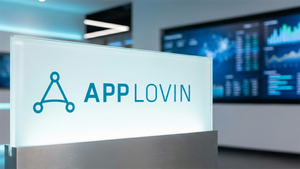Your guide to navigating clients' employee benefits in 2022 - the 11th Annual Aflac WorkForces Report
SOURCE: Aflac Incorporated
DESCRIPTION:
The 2021–2022 Aflac WorkForces Report is here! For this 11th annual study examining benefits trends and attitudes, we captured survey responses from 1,200 employers and 2,000 employees across various industries in the United States. The insights are significant—particularly these five takeaways and employee benefits trends.
The pandemic shifted how people view employee benefits
The COVID-19 pandemic is still having a meaningful effect on how 3 in 5 employees approach their benefits decisions. A third of employees think supplemental insurance is more important now than they did before the pandemic. And almost half of employees—and 63% of millennials—purchased at least one new benefit because of the pandemic, with life insurance, critical illness insurance and mental health resources sought after the most.
It’s possible to interpret this as people being concerned about their ability to cover medical bills, but the underlying drive is the same as it was before: people want to protect the people they value most. They want to ensure their loved ones are taken care of physically and financially.
Hybrid benefits enrollment is the future
Though they expect to manage their benefits online, employees – especially millennials – report a preference for working with a benefits advisor in person. In fact, 53% of the American workforce prefers talking to an advisor in person, while only 31% prefer a video meeting and 30% favor an online chat. Which means, just as with many jobs today, a hybrid model is emerging.
Working with your clients to fine-tune a hybrid enrollment system will help properly equip and educate employees to make the best benefits decisions. Doing so can help eliminate heightened confusion and frustration on their part, which could make enrollment season easier and more beneficial for everyone.
The employee benefits experience can help people feel cared for
Employees want to know they are cared for—and that their employers value them enough to give them time to care for themselves. That’s why positive perceptions of paid leave at work are linked to employees’ belief that their employers care for them.
But people don’t want this care to come from their employers only. In fact, employees and employers alike agree that it’s important for benefits companies to demonstrate their care, too. And while 77% of all employees say it is extremely or very important for benefits providers to show they care, an even higher percentage of millennials (87%) and Gen Zers (84%) hold this belief.
Caring is at the heart of what benefits leaders do. At Aflac, we care about what health insurance doesn’t cover, so those we insure can care about everything else. As a broker, you also embody the principle of care—so framing your work to your clients in terms of how you care for them can go a long way. And since younger employees are the most likely to say it’s important for benefits providers to show that they care, your efforts to serve as someone who tends to people’s needs will be valued as this group becomes more entrenched in the workforce.
Now is the time to double down on benefits for mental health and stress
Over the past year, personal mental health negatively affected the job performance of a third of the U.S. workforce. In particular, younger employees, essential workers and those affected by a COVID-19 diagnosis are more likely to experience burnout. Additionally, women are more likely than men to have experienced burnout. These groups may need more support from you and your clients—especially with employees reporting that benefits-related activities add even more stress.
While half of all American employees have high anxiety about health care costs beyond what their insurance covers—part of why our research shows that medical bill negotiation is particularly stressful—employees also experience stress when trying to understand what benefits they need. Keeping this in mind, it may help not only to highlight benefits pertaining to mental health and wellness but also to present your offerings in ways that help employees navigate them with ease.
The gap in employee benefits understanding
When it comes to benefits, employees might not know as much as your clients think they do: 72% of employers think their employees understand their health care costs well, while only 59% of employees say they actually do. This gap in understanding might also be why 83% of employers report being highly satisfied with their organization’s COVID-19 response, compared with only 67% of employees who say the same.
If employees don’t understand the breadth of their benefits and the health care costs they help cover, they’re unlikely to fully grasp how good your clients’ offerings really are—even if their benefits package is among the best you’ve ever put together. Providing clear-cut benefits education without insurance jargon may be the best bridge to close the knowledge gap.
To learn more about the state of employee benefits today, download the 2021–2022 Aflac WorkForces Report.
KEYWORDS: Aflac, NYSE: AFL, 11th Annual WorkForces Report, employee benefits





